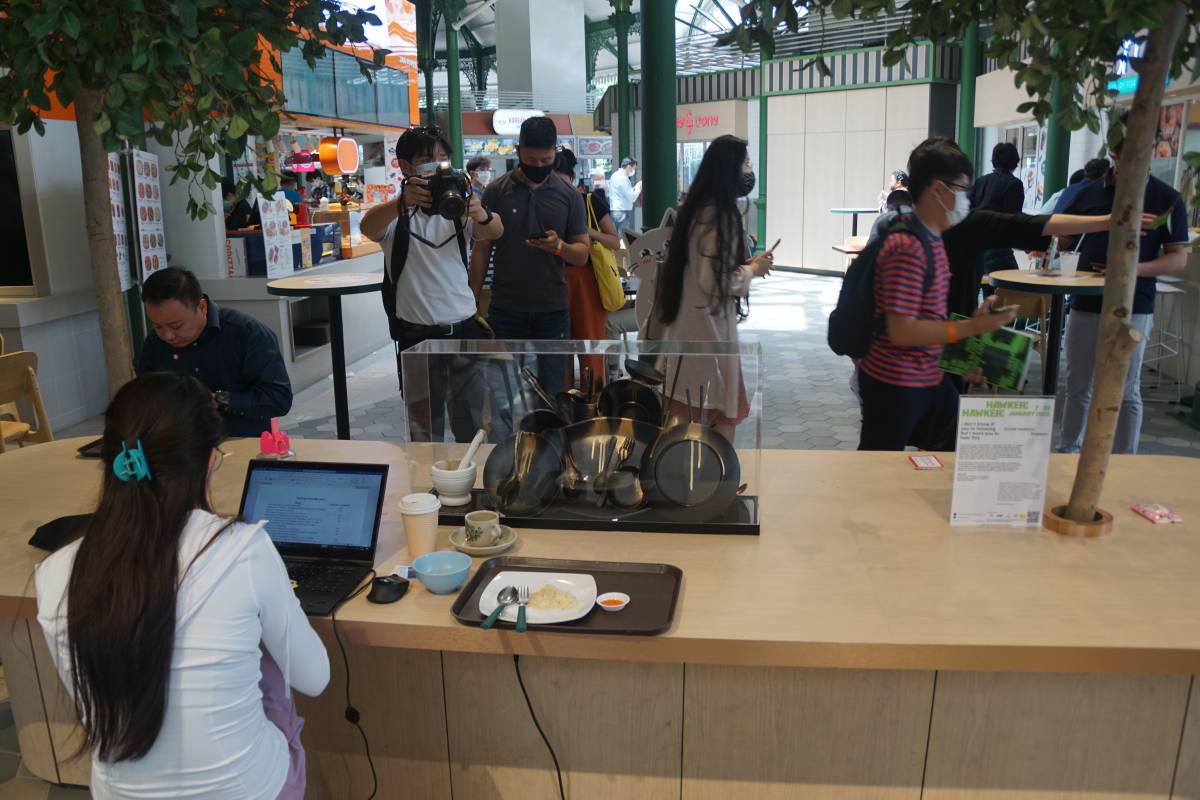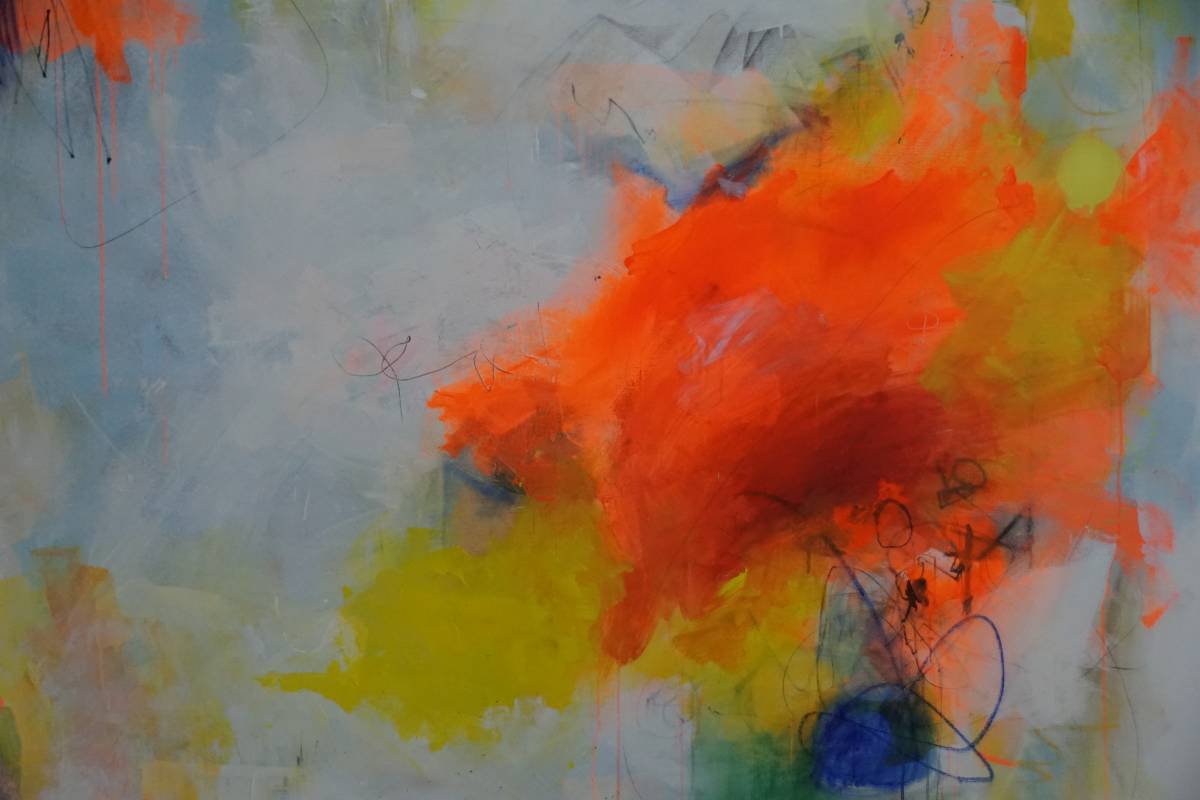Singapore Art Week Ventures into Unique and Unusual Venues
Celebrating 10 Years of Bringing Art to the Public SAW kicks off
(Singapore January 13, 2022) In a vacant lot on Prinsep Street, an industrial warehouse in Tanjong Pagar Distripark and Lau Pa Sat Hawker Centre historic, innovative and imaginative art is on display in unique ways. In a press preview leading up to Singapore Art Week (SAW 14 to 23 January 2022) we were given a tour of these venues by the delightful National Arts Council (NAC) team and heard from the artists who were preparing their work for the 10th edition. This year there will be over 130 events across the island and online, featuring new works, transnational collaborations, and virtual art experiences. Close to 600 artists, curators, creatives and partners from Singapore, Bangkok, China, Australia, Turkey, the United Kingdom and United States of America will participate. Art will be available across phygital realms, starting with a refreshed SAW Digital platform that is now accessible.
The lot on Prinsep Street wasn’t vacant when I arrived at 10:15 on a Monday morning. It was swarming with photographers, reporters, PR people, artists and curators. Also, according to the promotional material I was given, stood a ‘time portal’. Most people saw it as a Chinese street opera stage.
Natalie Tan, Assistant Director of Sector Development (Visual Arts), NAC, welcomed us and spoke about SAW 2022 and its highlights. Time Present Time Past is the theme of the DECK’s presentation of new works by five artists who explore this traditional performing art and its relevance in contemporary society. Ken Cheong gave us a fervent guided tour that gave us a glimpse behind the scenes. Providing context to this installation are 150 photographs and videos from Ken’s personal documentary on Chinese street opera that he made between 1989 to 2007.
During SAW Mary Bernadette Lee reveals what she learned from her investigations into the meanings behind ritual plays and symbolic mythical creatures on backdrops and costumes. Inspired by traditional stage painting, Wu Yanrong will deconstruct the stage in collaboration with Mr. Liang, the last opera stage painter in Singapore. Lai Yu Tong uses images of hands from the internet to tell stories about the modern world, inspired by hand gestures performed in Chinese opera. Yenting Hsu’s sound performance prompts collective memories and encourages visitors to trace Chinese opera’s roots and its public presence.
It is not so much the gallery space at Tanjong Pagar Distripark (TPD) that is unusual – I’ve been to art shows here before. It’s getting in, with container trucks rumbling about, going up industrial sized elevators that grunt, groan and rattle, keeping an eye out for forklifts that glide by. As a gallery space it is excellent. At TPD, SAW took over two expansive warehouse spaces and a cargo lift on Level 5, presenting an unorthodox art-going experience alongside its four open call projects.
When we entered the first large space where artists were still preparing for the event, one on a lift where he was putting more touches to a colourful mural. At the opposite end was a massive face image by Java. You may be familiar with his work in the Arab Street area. The artist explained that, not wanting a traditional mural, he wanted to catch the feeling of a sketch he’d done in a notebook. He succeeded.
One of the projects is A N T I N O D E S, which mixes street culture, music, architecture, technology, fashion and spirituality in this unlikely collaboration. Through experimental mediums of presentation such as robotics and augmented reality, the artists document changes in Singapore artistic practices amid the pandemic. Banding together to debut new works and narratives, seven multi-hyphenate artists - Kiat, KRINGE, Didier ‘Jaba’ Mathieu, triumvirate Metamo Industries and Delphine Rama, emerge with new perspectives on the way they create and think about their very own artmaking, paving the way for new transformational paths for their multivarious practices that span several disciplines.
Viewing even the unfinished presentations and listening to the artists one got a sense of how the pandemic and quarantines influenced their art. Delphine related some of the difficulties of doing her three metre tall images in a limited space. “I had to spread them out on the floor,” she stated, “it was a challenge working in this way.”
REFUSE is a time-based installation space and archive on Singapore’s very own art rock band The Observatory. Metamorphosis, evolution, and dissolution are at the heart of The Observatory’s ethos. REFUSE is an immersive world inspired by the word “refuse.” A world built entirely on waste and detritus, but also propelled by defiant gestures and resistance. This presentation brings together the band’s interest in fungi and mycelial networks to explore the twin ideas of decomposition and composition from biological and musical perspectives.
REFUSE also uses technology to translate bio-rhythms of living organisms into sound. The bio-rhythms from mushrooms in the space are translated into sound by a series of servo motors and motion sensors. These trigger specially designed mushroom-instruments that produce otherworldly soundscapes. Through this process, The Observatory relinquishes total control over the composition process, letting time and nature take the lead.
In Happy House, different generations express what happiness means to them. A large mirror with the Nike swoosh and the word HelpTM painted in black didn’t convey a feeling of happiness to me. If you interpret it to mean that the Nike mantra of ‘just do it’ will help you improve your self image (the mirror), then it is a positive message.
Kaleidoscope of Emotions was a less ambiguous message as swirling kaleidoscope of images and colours were projected a canvas ceiling (the high ceiling of the warehouse made their use impractical).
While many of the artists went big Bad Imitation went small. Focusing on items we are around everyday but ‘do we really see them’ asks artist Michael Lee. What we see in this exhibition are park benches in miniature and tiled concrete tables and seats that are common in HDB estates.
“A bad imitation is clumsy; it fumbles and flails. Its failures in mimicry open a gap between copy and original. By failing, however, a bad imitation reveals more of its original than the original ever could.
“Across the diverse practices of Ashley Hi, Catherine Hu, Daniel Chong, Khairullah Rahim x Nghia Phung, Michael Lee, Moses Tan, and Pat Toh, the exhibition presents imitations that are imprecise, flawed, and intentionally adjacent to the original. Be it objects, gestures, or images, these attempts at (re)production keep the original alive, yet firmly in their shadow.”
Perhaps the most unusual, and the most uncomfortable, venue is one of Singapore’s most prominent food centres. Succeeding at setting its art interventions in the everyday, Hawker! Hawker! happens at historic Lau Pa Sat. Curated by Singapore and New York-based artists respectively, Yen Phang and Oh Yam Chew are certain to spark dialogue over the future of Singapore’s hawker culture through mukbang, kopi chats and other interdisciplinary formats like participatory installation, digital art, and writing.
What makes this venue uncomfortable is that the works of art are above, beneath, next to and even on the table where people are having their meals. As I took photos and studied the various installations, I resisted the temptation to check out the dishes they were enjoying or listening in on their conversations.
The 13 collaborators in Hawker! Hawker! bring rich approaches and diverse intercultural perspectives from across international borders and disciplines that include a participatory installation, sculpture, photography, performance, digital art, and writing. They delve into the then and now of Singapore’s multifaceted hawker culture, as well as to imagine the future of this cherished “Intangible Cultural Heritage of Humanity.” (UNESCO, December 2020).
Having art in such a space can be challenging as Arun Chan, also known as Elephnt, discovered. Elphnt nosed his way around the island taking photos of various hawker centres. He put the card sized photos in boxes and placed them on tables in Lau Pa Sat. Overnight all six boxes were stolen.
I am often tempted to take someone’s pack of tissues that they’ve put on a table to reserve their space, but never give into it. Maybe the thief could return the photos so others can enjoy them too?
And apologies for not having more photos to accompany this but at the moment our website has a glitch in that it only posts the top photo. When that gets fixed more pictures will be added. What I suggest is that you visit the various sites where SAW 2022 is taking place and take your own photos and enjoy some wonderful imaginative works of art.
At Asian Journeys we have done several stories on SAW, in addition to this one. You can find them at:
Singapore Art Week in the Dec – Jan 2022 edition of Asian Journeys.
The Dreamer also in the Dec – Jan 2022 edition of Asian Journeys.
Celebrate Legacies and New Frontiers at the 10th Edition of Singapore Art Week on our website.






